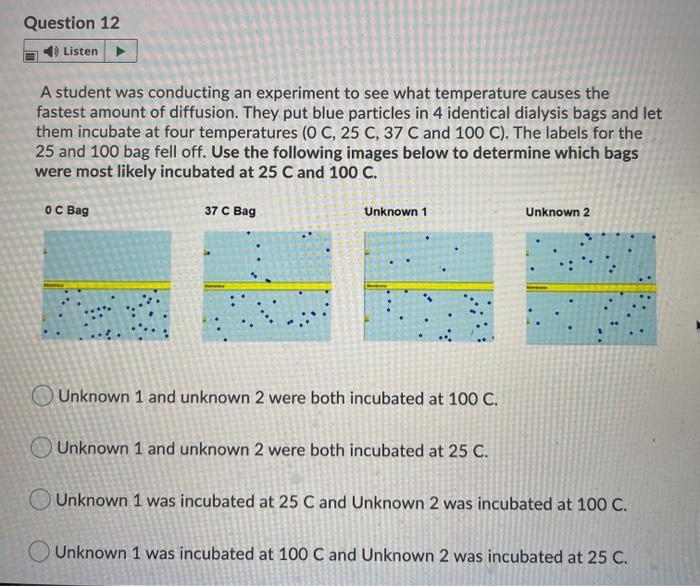Question 12 Listen A student was conducting an experiment to see what temperature causes the fastest amount of diffusion. They put blue particles in 4 identical dialysis bags and let them incubate at four temperatures (0 C, 25 C, 37 C and 100 C). The labels for the 25 and 100 bag fell off. Use the following images below to determine which bags were most likely incubated at 25 C and 100 C. OC Bag 37 C Bag Unknown 1 Unknown 2 OUnknown 1 and unknown 2 were both incubated at 100 C. Unknown 1 and unknown 2 were both incubated at 25 C. O Unknown 1 was incubated at 25 C and Unknown 2 was incubated at 100 C. Unknown 1 was incubated at 100 C and Unknown 2 was incubated at 25 C.
States of Matter
The substance that constitutes everything in the universe is known as matter. Matter comprises atoms which in turn are composed of electrons, protons, and neutrons. Different atoms combine together to give rise to molecules that act as a foundation for all kinds of substances. There are five states of matter based on their energies of attraction, namely solid, liquid, gases, plasma, and BEC (Bose-Einstein condensates).
Chemical Reactions and Equations
When a chemical species is transformed into another chemical species it is said to have undergone a chemical reaction. It consists of breaking existing bonds and forming new bonds by changing the position of electrons. These reactions are best explained using a chemical equation.

Trending now
This is a popular solution!
Step by step
Solved in 2 steps









